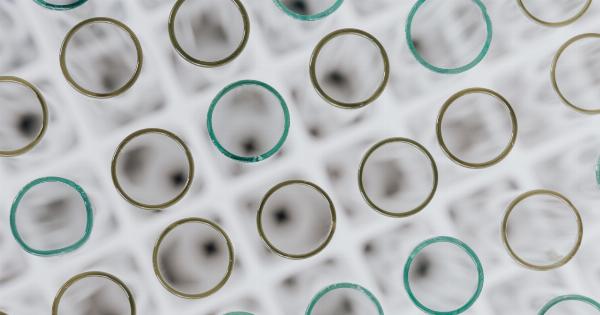Glaucoma is a chronic eye disease characterized by increased pressure within the eye, which can lead to damage of the optic nerve and permanent vision loss. It is one of the leading causes of blindness worldwide, affecting millions of people.
While there are several treatment options available, including eye drops, medications, and surgery, researchers have been exploring new alternatives to improve patient outcomes and quality of life. One such promising development is the use of contact lenses as a new treatment for glaucoma.
The Challenge of Glaucoma Treatment
Traditional treatment for glaucoma involves the use of eye drops to lower intraocular pressure (IOP). However, this method has several drawbacks.
Firstly, eye drops need to be administered multiple times throughout the day, which can be inconvenient for patients and may lead to poor adherence to the prescribed treatment regimen. Secondly, eye drops are often associated with side effects, such as redness, irritation, and blurred vision. Lastly, eye drops can be easily washed out of the eye, resulting in inconsistent medication delivery and reduced efficacy.
Although there are surgical options available, such as trabeculectomy or laser trabeculoplasty, these procedures are invasive, expensive, and may not always be suitable for every patient.
Therefore, there is a need for new treatment approaches that are effective, convenient, and comfortable for glaucoma patients.
The Potential of Contact Lenses
Contact lenses have been widely used to correct refractive errors and improve vision, but recent advancements have made it possible for them to serve a dual purpose in glaucoma treatment.
Researchers have been developing contact lenses that can deliver medication directly to the eye, bypassing the limitations of eye drops.
These specialized contact lenses are made using a variety of materials and technologies. Some are embedded with tiny drug-filled reservoirs or micro-needles that can release medication gradually over an extended period.
Others utilize nanotechnology to coat the lens surface with a medication layer, allowing for sustained release throughout the day.
The Benefits of Contact Lens Treatment
There are several potential advantages of using contact lenses as a treatment option for glaucoma:.
1. Enhanced Medication Delivery
Contact lenses offer a more direct and consistent delivery of medication to the eye compared to eye drops, which can easily be washed out. This improved drug delivery can lead to better control of intraocular pressure and improved disease management.
2. Extended Release
By incorporating drug reservoirs or utilizing sustained-release technologies, contact lenses can provide continuous medication delivery over an extended period.
This eliminates the need for frequent administration of eye drops and ensures a consistent therapeutic effect.
3. Convenience and Comfort
For many glaucoma patients, the need to regularly administer eye drops throughout the day can be burdensome and disrupt daily activities.
Contact lenses offer a more convenient and comfortable alternative, as they only need to be replaced on a weekly or monthly basis, depending on the lens type.
4. Improved Patient Adherence
Poor adherence to glaucoma medication regimens is a common issue among patients, leading to suboptimal disease management. Contact lenses may improve adherence rates by simplifying the treatment process and reducing the likelihood of missed doses.
5. Potential Cost Savings
While the initial cost of specialized contact lenses may be higher compared to traditional eye drops, the long-term cost of daily medication use can add up significantly.
Contact lenses with extended release capabilities can potentially reduce the need for frequent medication purchases, resulting in cost savings over time.
Challenges and Future Directions
Despite the promising potential of contact lenses as a new treatment option for glaucoma, there are still challenges that need to be addressed:.
1. Customization and Fit
Each patient’s eye shape and size are unique, requiring customized contact lenses to ensure proper fit and medication delivery.
Developing a standardized approach for fitting and manufacturing these specialized lenses will be crucial for widespread adoption.
2. Safety and Tolerance
Ensuring the safety and comfort of contact lenses for prolonged use is essential. Ongoing research is needed to evaluate the long-term effects and potential risks associated with wearing these lenses, including corneal health and microbial infections.
3. Compatibility with Existing Treatments
Contact lenses should be designed to work in conjunction with other glaucoma treatments, such as eye drops or surgical interventions. Combining different approaches may offer synergistic effects and further enhance treatment outcomes.
The Future of Glaucoma Treatment
Contact lenses hold significant promise as a new alternative treatment for glaucoma.
With ongoing advancements in material science, drug delivery technologies, and personalized medicine, the potential benefits of contact lens treatment are likely to expand in the future.
As researchers continue to refine these specialized lenses, glaucoma patients can look forward to improved treatment options that are more effective, convenient, and comfortable.
Contact lenses could revolutionize glaucoma management and help preserve vision for millions of individuals worldwide.































